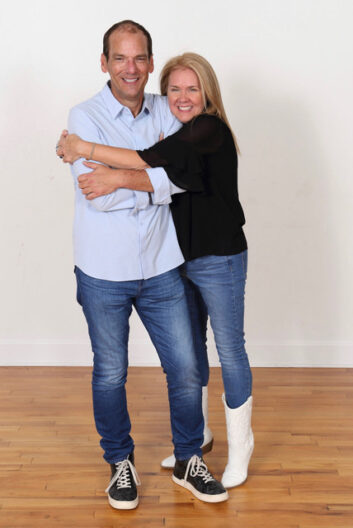Married morning duo uses Comrex contribution tool for remote work
WEKS “The Bear 92.5” is a country music station serving locally produced programming to suburban Atlanta. Since 2020, its morning show has been hosted by Cadillac Jack, a long-time fixture of Atlanta broadcasting, and his wife Donna, who is a relative newcomer to radio.
“[Donna]’s a superstar,” said Steve Mitchell, executive program director for “Mornings With Cadillac Jack.”

“The two of them are so good together — the content is so natural, because they’re married.”
The couple frequently travel separately for work, and so Mitchell needed a solution to get them both on the air from anywhere.
Being new to radio, Donna needed equipment that was intuitive and comfortable for her to use without technical support. They were looking for something portable and user-friendly that would also provide great sound quality, Mitchell said.
“As a program director, I ask myself: Will it work? Will it be a pain in the a**? Those are my two major considerations.”
Mitchell settled on Gagl, a cloud-based remote contribution tool from Comrex.
Gagl allows users to send and receive audio from consumer equipment, like cellphones and laptops, to a Comrex BRIC-Link or other Comrex codec located in a studio. By clicking a link in a common web browser, broadcasters can get on the air in seconds.
For their morning show, Cadillac Jack will often be located in WEKS’ Georgia studio, and Donna will be connecting from elsewhere in the country. Mitchell has found that no matter where they’re calling from, the calls sound great. “This is just good clean audio, and that’s why we like it so much,” said Mitchell. “It’s like having an ISDN line. It’s amazing that you can have ISDN quality audio from a cell phone.”
“With the sunset of ISDN, voiceover guys should consider using this,” Mitchell added.
The couple also uses Gagl to record their podcast, My Second Act.
“During the morning show when they’re live, Jack will send Donna a Gagl link from the studio, and they’ll connect to their BRIC-Link unit that way,” Mitchell said. “When they want to lay down audio for the podcast, he creates a Gagl from his home studio, they’ll do their show and he’ll record it for later. But it sounds like they’re in the same room.”
Gagl eliminated one of the biggest challenges that Mitchell had been dealing with: setting up a mix-minus.
“Non-radio people don’t understand what a mix-minus is,” said Mitchell. “Even explaining the concept is sometimes challenging. It’s a blessing that it’s built into this thing.”
Mitchell has used Gagl for other elements of the morning show as well. “We tested it with a contest winner, and it sounded like they were right there in the studio.” To get the winner on the air, Mitchell sent them a Gagl link, which they were able to easily open on their phone.
“You’re accustomed to hearing contest winners sound garbled on a less-than-perfect device like a telephone,” said Mitchell, “but that’s the beautiful thing about this. You might as well be in the studio.”
He concluded: “The versatility of Gagl is really cool — we’re able to maintain a consistent quality of sound, and be remote from any location. That flexibility is important. It’s gotta be easy and it’s gotta work. So far, Gagl has worked every time.”
Learn more about Gagl.
Have questions? Send us an email!
Originally published in Radio World. View here.
